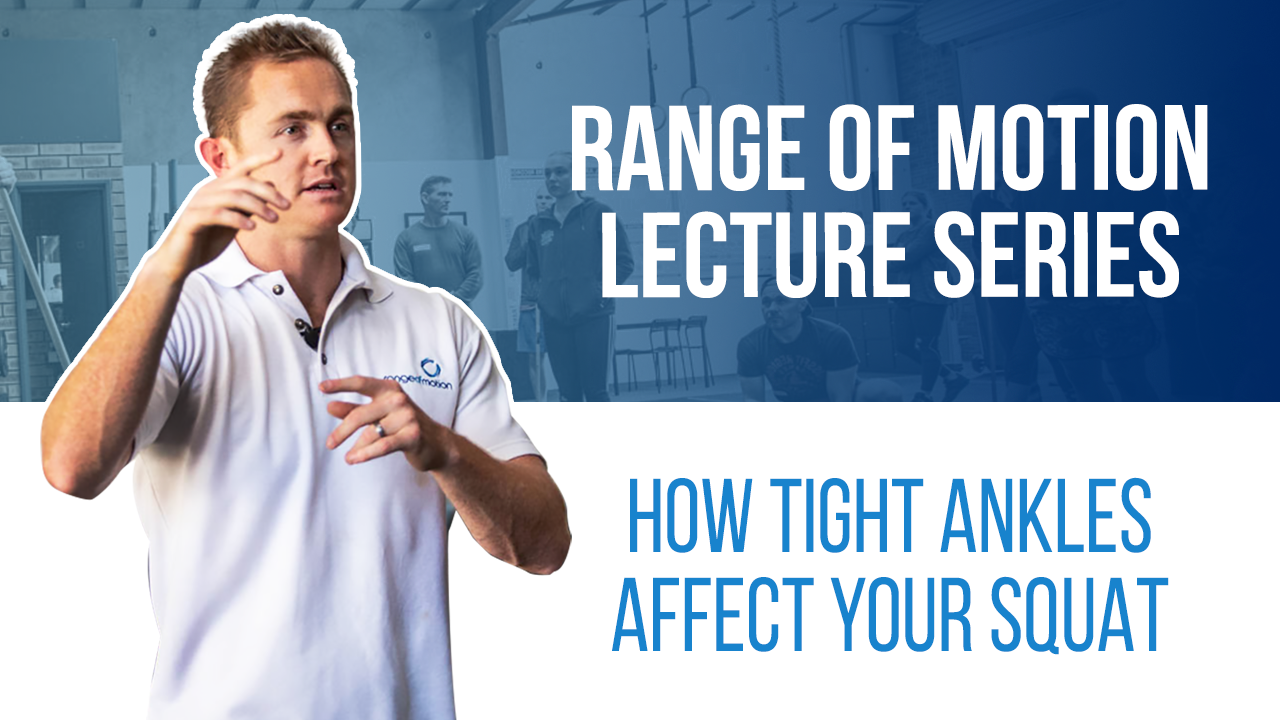Transcribed from video:
– Let’s talk ankles. Okay? Excessive foot turnout. Can you guys see that by turning the feet out further, there’s less stress placed on the achilles? So that would be a strategy for someone with tight achilles. They would turn their feet out more, now I can squat. Everyone stand up for me. Face your feet forward. So point your toes forward, normal stance. Good. Now screw your feet into the ground. Like you’re trying to drill for oil. Screw the feet into the ground. You feel your glutes working, to do that? Now turn your feet out as far as they will go. Like a penguin. Nope. Now screw your feet into the ground.
– [Classmate] Oh, boy.
– [Teacher] You can’t do it. All right. Have a seat. So what you can see there is a strategy people use when they’ve got short, tight achilles, is turning their feet out. ‘Cause it’s the only way that they can physically squat. But then they lose their ability to generate torque. So the glutes aren’t firing, their muscles don’t work. So I’ll quite often have people come to me and say “Ah, I’ve been told that I have weak glutes. My glutes are under-active, they’re inactive, I just can’t activate ’em when I squat.” The problems not with their glutes, it’s that they’ve got a huge hand-brake in the back of each ankle. Which is stopping them from getting into a position, where they can actually use their strength and use their muscle. Here’s what happens when your achilles are tight. Squat again for me, Marty. You see the knees aren’t able to come forward much there. Okay, and stand up. Let’s break this down, all right? Remember the hip bones connected to the. This is the sciencey version of that. Can you hold the bottom of your squat for 30 seconds? I’ll talk fast. All right. There is not much movement at the ankle. His knees can’t come forward. If his knees can’t come forward, they have to go back. The knee bone is connected to the hip bone. Because of that, if his knees are back, hips are going to be back. Yeah? If his hips are back, and he’s upright, what’s he going to do? He’s going to fall backwards. So he has to do this, as you said, as a compensatory thing. Hold that position, don’t move. Fold your arms. And there he goes. Okay, have a seat. So all of this is a response, to his achilles. Yeah? So we can diagnose a problem down at the achilles level, at the ankle level, based on what we see his shoulders doing, relative to his hips. So sometimes it’s not the obvious problem. Sometimes it’s not obviously, he can stay up right there, there’s a problem around hips or back or something. The first place that I would address, and I’m not saying there aren’t other things that need work as well, the first place that I would address would be what those achilles are doing. Okay.





